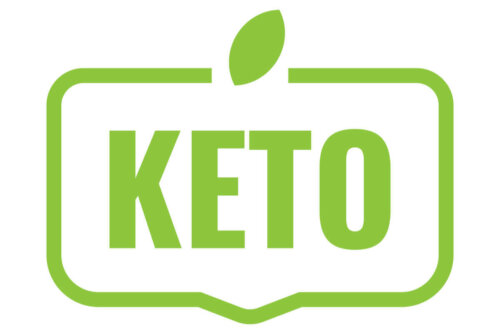Approved Ketogenic Diet Food List


Written and verified by the nutritionist Saúl Sánchez Arias
People who are interested in the ketogenic diet also want to know the approved ketogenic diet food list. This is a meal plan that’s become popular in recent years due to its possible health benefits.
It helps people lose weight and also serves to reduce epileptic seizures in patients who aren’t responsive to medication. In fact, experts are researching if it can be a treatment for diabetes.
This diet is based on a simple principle: the restriction of carbohydrates. Since it eliminates an entire food group, this diet isn’t for everyone. Of course, whoever adapts to it is capable of experiencing positive body composition changes in a short amount of time.
Approved ketogenic diet food list
As we mentioned above, the ketogenic diet is an eating plan that doesn’t allow the consumption of carbohydrates. For this reason, you need to know the foods that you can eat regularly so you don’t make mistakes. Discover them below.

Foods of animal origin
All animal products are approved in the keto diet, which is another name for this plan. Meat, fish, and eggs are protein foods that make up the base of the ketogenic dietary pyramid.
Ensuring protein intake is essential to avoid muscular catabolism, which prevents the development of sarcopenia in the medium and long term. Scientific evidence suggests that people should consume more than 0.8 grams per kilogram of weight per day, which is the minimum stipulated by the World Health Organization.
You need to be careful with the way you prepare food. It’s best to always cook them on the grill, in the oven, or in water. You should avoid batters, as they’d introduce carbohydrates.
Similarly, it’s best not to fry foods to avoid the formation of toxic waste products that can affect health. An example of these would be polycyclic aromatic hydrocarbons (PAHs). According to research published in the journal Scientific Reports, they may increase the risk of cancer.
Thus, the foods you can eat are:
- White meat
- Red meat
- White fish
- Oily fish
- Seafood
- Eggs
- Dairy products
You should also read: Six Tricks to Reduce Your Carbohydrate Intake
Vegetables
Most vegetables are low in carbohydrates. For this reason, they can be included in a ketogenic diet. Nevertheless, remember to not overdo it with tubers.
We need to emphasize that, when we talk about vegetables, we’re also referring to greens. You need to avoid fruits in large quantities, as their fructose content may break the ketosis process. This is the metabolic foundation of the keto plan. It consists of producing body energy through sources other than the usual ones.
Proponents of this type of diet argue that fructose is capable of increasing the risk of liver disease, something that recent studies seem to evidence. Likewise, you need to restrict legumes. This is because these foods also contain sugars that are capable of interfering with the metabolism of fatty acids.
The vegetables that you can include are the following:
- Cruciferous vegetables
- Celery
- Lettuce
- Beans
- Onion
- Spinach
- Zucchini
- Pepper
- Avocado
When you’re making these products, you should avoid batters, just like with meats. It’s best to cook them on the grill or steam them. If you cook them with water, it’s best not to discard the broth itself to avoid losing water-soluble vitamins.
To know more, you should read: The Ketogenic Diet: What You Should Know and its Risks
Fatty foods
Lastly, you should include fatty foods regularly in the ketogenic diet. These provide omega-3 and -6 acids, necessary for proper bodily functioning.
The former have, among other abilities, the power to modulate systemic inflammation. Thus, and according to a study published in the journal American Family Physician, the regular intake of these nutrients helps reduce cardiovascular risk.
When it comes to fatty foods, we’re fundamentally referring to:
- Vegetable oils
- Oily fruits (avocado)
- Nuts
You should always consume these products raw to avoid eliminating or affecting their nutritional value. Subjecting lipids to high temperatures increases the production of trans fatty acids. According to scientific literature, these substances have inflammatory capacities that can harm the body.
Approved ketogenic diet drink list
When it comes to the ketogenic diet, it’s also important to pay attention to the list of approved drinks. Water is always the best option. It’s best to consume it alone. However, you can occasionally opt for sparkling water.
Both coffee and tea are allowed. However, it’s important not to use sugar or artificial sweeteners to avoid causing pancreatic stress. It’s possible to dilute them with some milk.
The ketogenic diet sporadically allows the intake of small amounts of alcohol. However, experts don’t support this practice, as alcoholic beverages negatively affect health in other ways.

Sample menu with approved ketogenic diet food list
Here’s a sample menu with foods from the ketogenic diet that can give you some ideas to make your own dishes.
Breakfast:
- A cup of kefir with seeds and nuts
- 2 fried eggs with 1/2 cup of raspberries
Lunch:
- Baked chicken with broccoli and peppers
- Grilled salmon with asparagus and avocado
Snack:
- Yogurt with flax seeds and pineapple pieces
- Turkey and cheese rolls
Dinner:
- Baked sea bass with green salad
- Roasted pork rib with avocado and cauliflower
Introduce a variety of foods into the ketogenic diet
As you’ve seen, you can plan a varied ketogenic diet within the allowed food groups. If you have any doubts, go see a specialist. They’ll be able to give you precise and individualized indications.
Remember that the ketogenic diet isn’t for everyone. Some people don’t adhere to this model or suffer from pathologies that condition their general health. Thus, they can’t follow restrictive diets.
All cited sources were thoroughly reviewed by our team to ensure their quality, reliability, currency, and validity. The bibliography of this article was considered reliable and of academic or scientific accuracy.
- Wolfe RR., Cifelli AM., Kostas G., Kim IY., Optimizing protein intake in adults: interpretation and application of the recommended dietary allowance compared with the acceptable macronutrient distribution range. Adv Nutr, 2017. 8 (2): 266-275.
- Stec AA., Dickens KE., Salden M., Hewitt FE., et al., Occupational exposure to polycyclic aromatic hydrocarbons and elevated cancer incidence in firefighters. Sci Rep, 2018.
- Horst KWT., Serlie MJ., Fructose consumption, lipogenesis, and non alcoholic fatty liver disease. Nutrients, 2017. ç
- Rogers TS., Seehusen DA., Omega 3 fatty acids and cardiovascular disease. Am Fam Physician, 2018. 97 (9): 562-564.
- Ahmed SH., Kharroubi W., Kaoubaa N., Zarrouk A., et al., Correlation of trans fatty acids with the severity of coronary artery disease lesions. Lipids Health Dis, 2018.
- Braillon A., Alcohol: cardiovascular disease and cancer. J Am Coll Cardiol, 2018. 71 (5): 582-583.
- Hernández Alcántara, Gloria, Arturo Jiménez Cruz, and Montserrat Bacardí Gascón. “Efecto de las dietas bajas en carbohidratos sobre la pérdida de peso y hemoglobina glucosilada en personas con diabetes tipo 2: revisión sistemática.” Nutrición Hospitalaria 32.5 (2015): 1960-1966.
- da Cunha Vaz, Inês Dias. “Dieta Cetogénica e Resistência à insulina.” (2019).
- Covarrubias Gutiérrez, P., M. Aburto Galván, and L. F. Sámano Orozco. “Dietas cetogénicas en el tratamiento del sobrepeso y la obesidad.” Nutrición Clínica y Dietética y Hospitalaria 33.2 (2013): 98-111.
- Espinoza, C. “Dieta cetogénica en pediatría.” Sanjurjo, P, Baldellou, A. Diagnóstico y Tratamiento de Enfermedades Metabólicas Hereditarias. 3a ed. Madrid: Ergón. C/arboleda 1 (2010): 265-273.
This text is provided for informational purposes only and does not replace consultation with a professional. If in doubt, consult your specialist.








